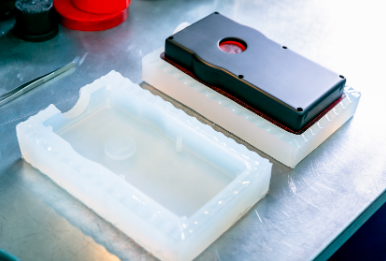Urethane Cast Parts: An In-Depth Guide to Techniques, Benefits, Applications, and Future Trends

Introduction
Urethane cast parts are a critical component in the world of manufacturing and prototyping, offering a versatile solution for creating high-quality components across various industries. This comprehensive article will delve into the details of urethane casting, including the techniques used, the benefits offered, common applications, and emerging trends. Whether you’re an engineer, designer, or business owner, understanding Urethane cast parts can provide valuable insights into how this technology can meet your production needs.
What are Urethane Cast Parts?
Urethane cast parts are components produced using a casting process that involves pouring liquid polyurethane resin into a mold. The resin cures to form a solid part with specific properties tailored to the requirements of the application. This process is renowned for its ability to create parts with excellent detail, durability, and versatility.
The Urethane Casting Process
- Mold Creation
- Overview: The casting process begins with the creation of a mold. Molds are designed to shape the liquid resin into the desired part configuration.
- Materials and Techniques: Molds can be made from various materials, such as silicone, aluminum, or epoxy. Silicone molds are often used for their flexibility and ease of use, while aluminum or steel molds are preferred for high-volume production due to their durability.
- Resin Preparation
- Overview: Urethane resins are prepared by mixing a base resin with a hardener. The specific formulation depends on the desired properties of the final part.
- Customization: Different resin formulations allow for adjustments in hardness, flexibility, and other characteristics. This customization ensures that the final product meets specific requirements.
- Casting the Resin
- Overview: The prepared resin is poured into the mold cavity. It fills the mold and takes on the shape of the intended part.
- Techniques: To avoid air bubbles and ensure a uniform fill, techniques such as vacuum degassing or pressure casting are employed. These methods help achieve a high-quality finish and precise dimensions.
- Curing
- Overview: After pouring, the resin must cure. Curing times can vary based on the resin formulation and environmental conditions.
- Methods: Curing can be accelerated through heat or chemical accelerators, depending on the needs of the project. Proper curing is crucial for achieving the desired material properties.
- Demolding and Finishing
- Overview: Once cured, the part is removed from the mold. Additional finishing processes may be required to meet final specifications.
- Techniques: Finishing may include sanding, painting, and assembling. These steps enhance the part’s appearance and functionality.
Read also: Piggable Products: Enhancing Efficiency and Maintenance in Industrial Pipelines
Advantages of Urethane Cast Parts
Urethane cast parts offer several key advantages that make them a popular choice for various applications:
1. Cost-Effectiveness
- Overview: Urethane casting is generally more affordable than traditional manufacturing methods, especially for prototypes and small-batch production.
- Benefits: The cost savings stem from the lack of expensive tooling and setup costs. This makes urethane casting a viable option for projects with limited budgets.
2. Design Flexibility
- Overview: Urethane casting provides significant design flexibility, allowing for the creation of parts with varying physical properties.
- Benefits: This flexibility means that parts can be customized to meet specific hardness, flexibility, and chemical resistance requirements.
3. Rapid Turnaround
- Overview: Urethane casting enables quick production of parts, making it ideal for projects with tight timelines.
- Benefits: Fast prototyping and short production cycles can accelerate time-to-market, facilitating quicker design iterations and product launches.
4. High Precision
- Overview: The process can achieve high levels of precision and detail, replicating complex geometries and fine features.
- Benefits: High precision is critical for applications requiring tight tolerances and detailed specifications, ensuring that parts meet exacting standards.
5. Excellent Surface Finish
- Overview: Urethane casting can produce parts with smooth, high-quality surfaces, reducing the need for extensive post-processing.
- Benefits: High-quality surface finishes enhance the aesthetic appeal and functionality of the final product, minimizing additional finishing work.
Applications of Urethane Cast Parts
Urethane cast parts are used across a broad spectrum of industries due to their versatility and benefits. Here are some common applications:
1. Prototyping
- Overview: Urethane casting is ideal for creating prototypes, allowing designers and engineers to test and refine their designs before mass production.
- Benefits: It provides a cost-effective way to produce functional prototypes with accurate details, enabling quick iterations and design improvements.
2. Custom Parts
- Overview: The process is well-suited for producing custom parts that may not be feasible with traditional manufacturing methods.
- Benefits: Urethane casting allows for the creation of unique components with specific properties, meeting the needs of specialized applications.
3. Small-Batch Production
- Overview: Urethane casting is an excellent choice for small-batch production runs, offering a cost-effective solution without the need for expensive tooling.
- Benefits: It enables manufacturers to produce limited quantities of parts efficiently, reducing overhead costs and production time.
4. Functional Parts
- Overview: The technique can produce functional parts with specific mechanical properties, such as impact resistance or flexibility.
- Benefits: This capability makes urethane casting suitable for creating parts that must withstand real-world conditions and performance requirements.
5. Cosmetic Parts
- Overview: Urethane casting is used to create cosmetic parts for aesthetic applications, including automotive trim, consumer products, and decorative elements.
- Benefits: It provides high-quality finishes and detailed surface features, enhancing the visual appeal of the final product.
Challenges in Urethane Casting
While urethane casting offers numerous advantages, there are also challenges that need to be addressed:
1. Material Limitations
- Overview: Urethane resins have limitations in terms of temperature resistance and chemical compatibility.
- Challenges: For applications exposed to extreme temperatures or harsh chemicals, alternative materials or protective coatings may be required to ensure durability and performance.
2. Mold Durability
- Overview: The durability of the mold can impact the quality and consistency of the cast parts.
- Challenges: For high-volume production, investing in durable molds made from materials such as aluminum or steel may be necessary to maintain part quality and reduce mold wear.
3. Curing Time
- Overview: Curing times can vary based on the resin formulation and environmental conditions.
- Challenges: Proper management of curing times and conditions is essential to avoid defects and ensure that parts achieve the desired material properties.
4. Quality Control
- Overview: Maintaining quality control throughout the casting process is crucial for achieving consistent results.
- Challenges: Implementing rigorous inspection and testing procedures can help identify and address potential issues before they impact the final product.
Conclusion
Urethane cast parts represent a versatile and cost-effective solution for producing high-quality components across a wide range of applications. By understanding the urethane casting process, its advantages, and best practices, manufacturers can leverage this technology to meet their specific needs and achieve superior results. As advancements in materials and technology continue to shape the industry, urethane casting will remain a valuable tool for innovation and excellence in manufacturing.





